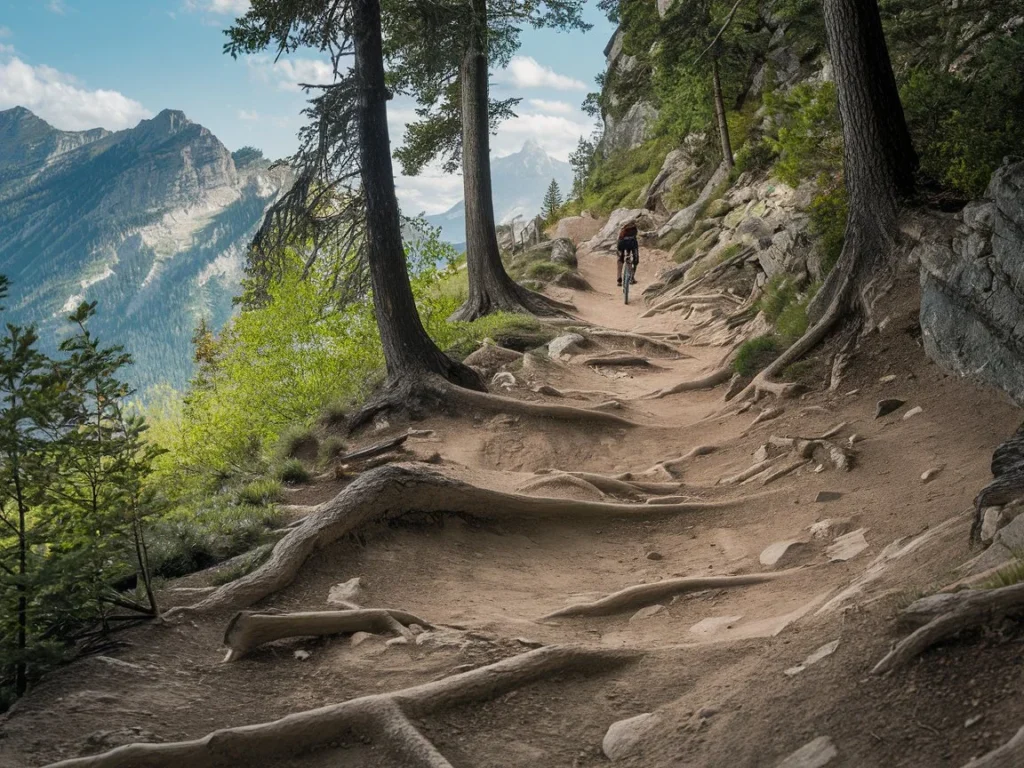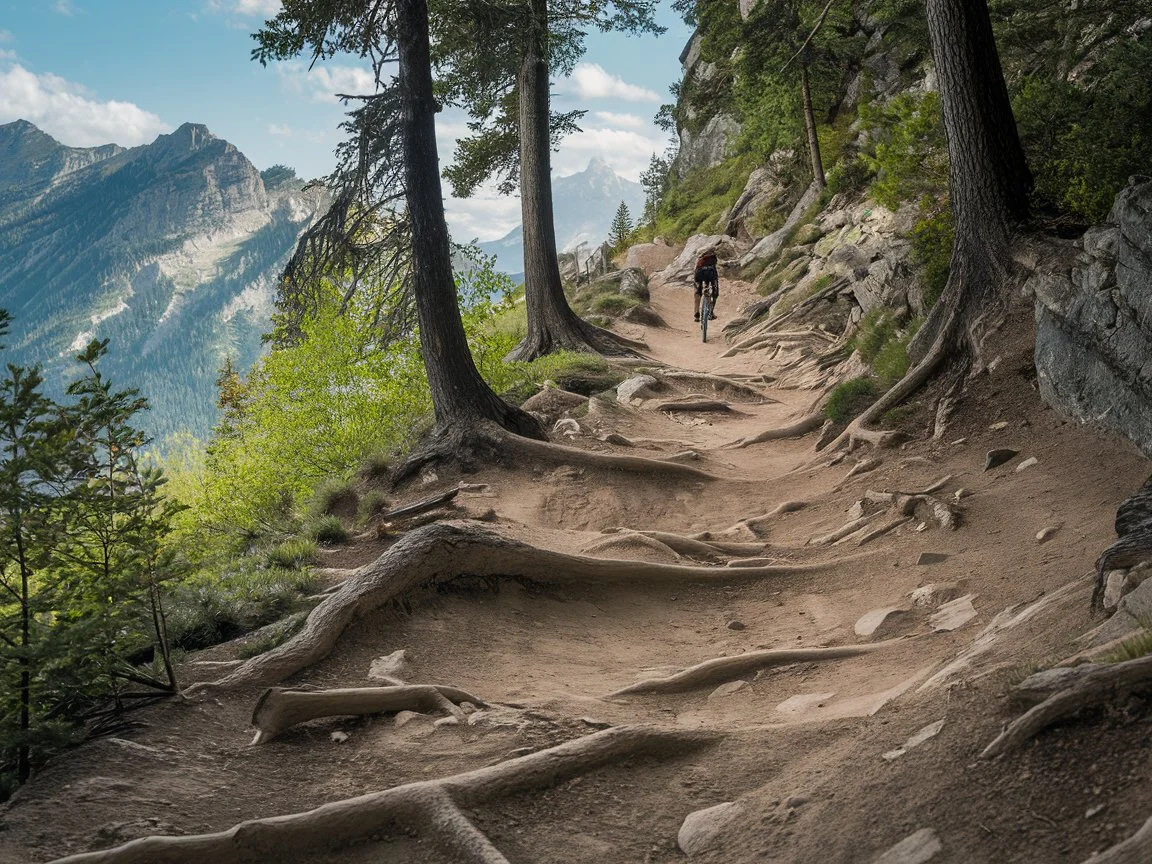
Introduction
Mountain biking is more than just a sport—it’s an exhilarating way to explore rugged landscapes and immerse yourself in nature. Whether you’re navigating rocky trails, speeding through dense forests, or conquering steep descents, mountain biking offers a unique blend of adventure, fitness, and freedom. It’s a chance to push your limits, connect with the outdoors, and experience the thrill of riding through some of the most breathtaking terrains on Earth.
Beyond the adrenaline rush, mountain biking provides numerous physical and mental benefits. It’s a full-body workout that improves cardiovascular health, builds muscle strength, and enhances balance and coordination. Mentally, it’s a chance to unplug, reduce stress, and enjoy the serenity of nature. This guide will walk you through everything you need to know to embark on your own mountain biking adventure, from choosing the right trails and gear to staying safe and planning multi-day trips.
1. Best Mountain Biking Trails for Different Skill Levels
Mountain biking trails cater to riders of all abilities. Here’s a breakdown of trails for beginners, intermediates, and advanced riders:
- Beginner Trails:
- Description: These trails are perfect for newcomers to mountain biking. They feature smooth, wide paths with gentle slopes and minimal obstacles.
- Example: The Slickrock Bike Trail in Moab, Utah, offers beginner-friendly sections with stunning red rock views.
- Intermediate Trails:
- Description: Intermediate trails offer moderate elevation gains, technical sections, and more varied terrain. They’re ideal for riders with some experience who want a bit of a challenge.
- Example: The Flume Trail in Lake Tahoe, Nevada, is a 14-mile trail with moderate climbs and breathtaking views of the lake.
- Advanced Trails:
- Description: Advanced trails are for experienced riders seeking a challenge. They often feature steep descents, rock gardens, and high-adrenaline features like jumps and drops.
- Example: The Whistler Bike Park in British Columbia, Canada, is a world-renowned destination with advanced downhill trails and technical features.
2. Essential Mountain Biking Gear
Having the right gear is crucial for a safe and enjoyable ride. Here’s what you’ll need:
- Bike Choice:
- Hardtail Bikes: These bikes have front suspension only and are lightweight and efficient for smoother trails.
- Full Suspension Bikes: These bikes have both front and rear suspension, making them ideal for rough, technical terrains.
- Protective Gear:
- Helmet: A well-fitted helmet is non-negotiable for safety.
- Gloves: Improve grip and protect your hands.
- Pads: Knee and elbow pads provide extra protection for technical trails.
- Other Must-Haves:
- Water Bottles or Hydration Packs: Stay hydrated on long rides.
- Repair Kits: Include a multi-tool, spare tube, and pump.
- GPS Devices: Help you navigate and track your ride.
3. Understanding Terrain and Trail Types
Different terrains and trail types offer unique challenges and experiences:
- Singletrack:
- Description: Narrow, winding paths with varying difficulty.
- Tips: Focus on balance and control, especially on technical sections.
- Downhill Trails:
- Description: Steep, fast-paced descents for adrenaline lovers.
- Tips: Use full suspension bikes and wear extra protective gear.
- Cross-Country Trails:
- Description: Longer, endurance-based trails with both uphill and downhill sections.
- Tips: Pace yourself and carry plenty of water and snacks.
4. Safety Tips for Mountain Biking
Safety should always be a priority when mountain biking:
- Riding Etiquette:
- Yield to hikers and uphill riders. Announce yourself when passing others.
- Handling Difficult Terrain:
- Use proper body positioning to navigate rocks, roots, and steep inclines.
- Emergency Situations:
- Carry a first-aid kit and know basic wilderness first aid. Have a plan for emergencies, including how to call for help.
5. Best Locations for Mountain Biking Adventures
Here are three must-visit mountain biking destinations:
- Location 1: Moab, Utah
- Description: Known for its red rock landscapes and challenging trails, Moab is a mecca for mountain bikers. The Porcupine Rim Trail offers stunning views and technical challenges.
- Location 2: Whistler, British Columbia
- Description: Home to the famous Whistler Bike Park, this destination offers trails for all skill levels. The A-Line Trail is a favorite among advanced riders.
- Location 3: Pisgah National Forest, North Carolina
- Description: This forest boasts a network of rugged, technical trails surrounded by lush greenery. The Black Mountain Trail is a favorite among advanced riders.
6. Preparing for a Multi-Day Mountain Biking Trip
Planning is key to a successful multi-day biking adventure:
- Packing Essentials:
- Bring tools, spare parts, and extra clothing. Don’t forget a tent, sleeping bag, and cooking gear if camping.
- Training & Conditioning:
- Build endurance and strength through regular rides. Practice technical skills like climbing and descending.
- Camping and Lodging:
- Combine biking with wilderness camping or stay in local inns for a more comfortable experience.
Conclusion
Mountain biking is an exciting and rewarding way to explore rugged landscapes and connect with nature. Whether you’re a beginner or an experienced rider, there’s always a new trail to conquer and a new horizon to explore. By choosing the right gear, following safety tips, and planning carefully, you can make the most of your mountain biking adventure. So gear up, hit the trails, and let the wilderness be your playground. Happy riding!
See more about Trails, Tips & Gear you need for Mountain Biking Adventures in our Guide : Mountain Biking Adventures in the Wilderness: Trails, Tips & Gear

